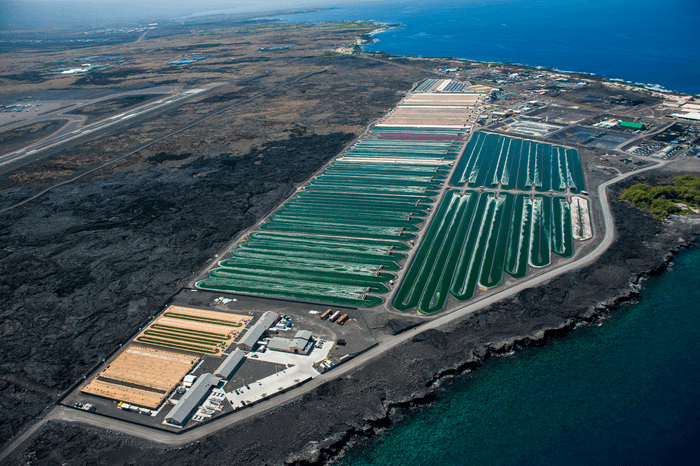SEATTLE — Algae burgers and other food created from marine aquaculture could feed the world and help save the planet at the same time, a new study explains. The green substance, packed with protein and vitamins, holds the key to combating climate change, according to scientists in the United States.
Researchers believe algae can meet dietary needs while reducing the ecological footprint of farming.
“Agriculture provides the backbone of the today’s global food production system; however, its potential to meet the world’s nutritional demands by 2050 are limited. Marine microalgae can help fill the projected nutritional gap while simultaneously improving overall environmental sustainability and ocean health,” says lead author Dr. Charles Greene from Washington University in a media release.
The global population will reach nearly 10 billion within the next three decades. Each degree of warming reduces the output of crops by up to a quarter. Prolonged droughts or floods exacerbate the problem. It’s estimated that agricultural productivity must double in the next 30 years to meet demands.
“By taking an integrated, circular economy approach to cultivating marine microalgae we can close the gap in human nutrition projected for 2050 and simultaneously reduce many of the negative impacts our current food production system has on climate and the global environment,” Dr. Greene says, according to a statement from SWNS.
How does algae stack up to normal food?
Their study calls for increased investment in algae aquaculture systems to meet consumer demand. With climate change making the raising of livestock less sustainable, farming algae as a meat alternative holds promise for developing new ways of producing protein for human consumption. Farming and fisheries are bad for the climate, land, lakes, rivers, streams, and biodiversity, according to the team. They suggest shifting focus down the food chain to microalgae, abundant in both freshwater and marine aquatic systems.
Although only a few micrometers in size, they produce amino acids, fatty acids, vitamins, minerals, antioxidants, polymers, and carbohydrates. Only a handful of species are currently used commercially, but hundreds of strains have the potential to become food and feed sources. The tiny plants are already used as a food ingredient, in supplements, and as aquafeed for fish.
“We always knew the high productivity of marine microalgae could help us reduce the carbon and land footprints of agriculture,” Dr. Greene tells SWNS. “However, what came as an unexpected surprise was just how much protein could potentially be produced from such a small footprint of non-arable, coastal land in the Global South. The implications of our results for sustainable development are profound.”
Farming algae takes a fraction of the resources
To fight global hunger and increase food security, the demand for crops like soybean – widely used as animal feed – is expected to increase 80 percent by 2050. Producing soy requires large amounts of water and is driving deforestation in South America, leading to more environmental damage.
Producing one kilogram of beef-sourced essential amino acids requires 148,000 liters of freshwater and 125 square meters of fertile land. The equivalent microalgae raised in an open pond requires only 20 liters of freshwater and 1.6 square meters of non-fertile land.

“The financial headwinds faced by a new marine microalgae-based aquaculture industry will be stiff because it must challenge incumbent industries for market share before its technologies are completely mature and it can achieve the full benefits of scale. Financial investments and market incentives provided by state and federal governments can help reduce this green premium until the playing field is level. The future role of algae-based solutions in achieving global food security and environmental sustainability will depend on the actions taken by governments today,” the study authors write.
Microalgae may provide high amounts of nutritional protein, essential amino acids, as well as other micronutrients, such as vitamins and antioxidants. Additionally, a marine microalgae-based aquaculture industry would not require arable land and freshwater or pollute freshwater and marine ecosystems through fertilizer runoff.
The U.N. has warned that rising temperatures, extreme weather, and land degradation due to climate change will wipe out crops and livestock — causing global shortages. Contemporary food systems exhaust the biosphere by eroding soils and contaminating groundwater, leading to the logging of forests and the fragmentation of habitats.
“Our window of time to solve these global challenges is narrow, and the solutions are on a scale that our policy makers have difficulty even imagining, let alone investing in,” Dr. Greene concludes. “The future of algae-based solutions in achieving global food security and environmental sustainability will depend on the actions taken by the investment community and governments today.”
The study is published in the journal PLOS Biology.
South West News Service writer Mark Waghorn contributed to this report.

